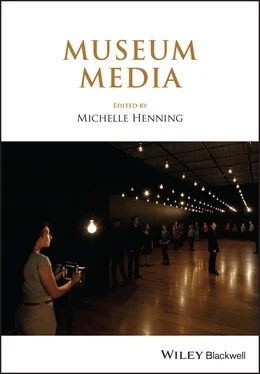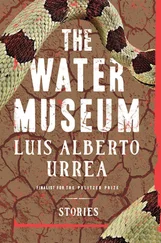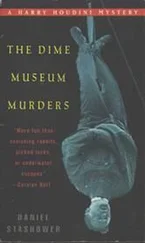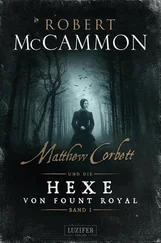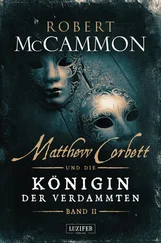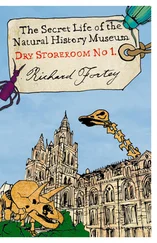Museum Media
Здесь есть возможность читать онлайн «Museum Media» — ознакомительный отрывок электронной книги совершенно бесплатно, а после прочтения отрывка купить полную версию. В некоторых случаях можно слушать аудио, скачать через торрент в формате fb2 и присутствует краткое содержание. Жанр: unrecognised, на английском языке. Описание произведения, (предисловие) а так же отзывы посетителей доступны на портале библиотеки ЛибКат.
- Название:Museum Media
- Автор:
- Жанр:
- Год:неизвестен
- ISBN:нет данных
- Рейтинг книги:4 / 5. Голосов: 1
-
Избранное:Добавить в избранное
- Отзывы:
-
Ваша оценка:
- 80
- 1
- 2
- 3
- 4
- 5
Museum Media: краткое содержание, описание и аннотация
Предлагаем к чтению аннотацию, описание, краткое содержание или предисловие (зависит от того, что написал сам автор книги «Museum Media»). Если вы не нашли необходимую информацию о книге — напишите в комментариях, мы постараемся отыскать её.
Museum Media — читать онлайн ознакомительный отрывок
Ниже представлен текст книги, разбитый по страницам. Система сохранения места последней прочитанной страницы, позволяет с удобством читать онлайн бесплатно книгу «Museum Media», без необходимости каждый раз заново искать на чём Вы остановились. Поставьте закладку, и сможете в любой момент перейти на страницу, на которой закончили чтение.
Интервал:
Закладка:
Another feature of diversification that deserves comment here is the temporal. There has been a considerable amount of outstanding historical research undertaken in museum studies and the International Handbooks both review some of this and contribute further to it. Such work is important in its own terms, helping us to understand better the contexts in which museums emerged and have operated, and the concerns, constraints, personalities, and opportunities in evidence in particular times and places. It also contributes in vital ways to contemporary understandings, both by adding to the range of cases available for analysis and by showing the longer historical trajectories out of which various current approaches and practices emerged. Sometimes – and there are examples in all of the volumes here – their message is salutary, showing that what seemed like an innovation has been tried before, and perhaps with the distance of time allowing a more critical perspective than might feel comfortable today. The past shows change but also continuities and the re-emergence, or even repackaging, of what has gone before.
Disciplinarity and methodology
Research on past museum innovation and practice shows the importance of historical method, and of history as a discipline, within museum studies. This brings us to the wider issue of disciplinarity and methodology. To talk of museum studies as interdisciplinary has become a truism. The volumes here are a clear illustration that those involved in museum studies have been trained in and may have primary institutional locations in a wide range of disciplines and areas of study, including anthropology, archaeology, architecture, area studies, cultural studies, economics, education, geography, literature, management, media studies, political science, and sociology, as well as history and art history. Beyond that, however, they are also carving out new niches, sometimes institutionally recognized, sometimes not, in areas such as digital curation and creative technologies, as well as in art gallery, museum, and heritage studies, in various combinations or alone. Moreover, in addition to disciplines and a multitude of academic specialisms, practitioner contributors bring diverse professional expertise in areas including exhibition design, community engagement, conservation, interpretation, and management.
Alongside the diversity of concepts and methodologies offered by various disciplines and diverse forms of practical expertise, is also the distinctive feature of museum studies – its engagement with the past, present, and future world of museums. Such work, to varying extents, confronts researchers and academics with the actual concerns, predicaments, objects, spaces, media, and people all, in various ways, involved in museum collections and exhibitions. Increasingly, this means actual collaboration, and the development of methodological approaches to enable this. Examples in these volumes include those who consider themselves to be primarily academics, artists, or activists being directly involved in the production of collections, media (e.g., new media apps or forms of display), and exhibitions. The nature of museum work is, inevitably, collaborative, but in some cases it also involves more explicit attempts to work with those who have had little previous engagement in museum worlds and draws on methodology and ethical insight from disciplines such as social and cultural anthropology to do so. Such actual engagement – coupled with what we see as more fluid traffic between academia and museums also powers new forms of theorizing and practice. This productive mobility affords museum studies its characteristic – and, in our view, especially exciting – dynamic.
Organization of the International Handbooks
As we originally planned these International Handbooks , dividing their coverage into the four volumes of Theory, Practice, Media, and Transformations made good sense as a way of grouping key areas of work within the field. Our idea was that Theory would bring together work that showed central areas of theorizing that have shaped museum studies so far, together with those that might do so in the future. We envisaged Practice as attending especially to areas of actual museum work, especially those that have tended to be ignored in past theorizing, not in order to try to reinstate a theory/practice division but, rather, to take the opportunity to transcend it through theorizing these too. We saw Media as the appropriate label to cover the crucially important area for museums of their architecture, spaces, and uses of diverse media primarily, though not exclusively, for display. Transformations was intended to direct its attention especially to some of the most important social, cultural, political, and economic developments that are shaping and look likely to reshape museums in the future.
In many ways, what has resulted fits this original remit. We always knew that there would inevitably be areas of convergence: in particular, that theory can derive from practice, and vice versa; that the development and expansion of social media is propelling some of the most significant transformations in museums, and so forth. Yet it is probably true to say that there are more synergies than we had imagined, perhaps because museum work has itself become more open to change, new ideas and practice, and unconventional practitioners and participants, from what would previously have been considered outside. To make distinctions between practitioners and theorists continues to make sense in some contexts. What we see, however, is an increasing band of critical practitioners and practice-based researchers – those who operate in both worlds, drawing inspiration for new practice from areas of theorizing as well as from adaptations of cases from elsewhere. Equally they use practice to think through issues such as the nature of objects, the role of media, or sensory potentials.
It is interesting to note that at an analytical level, the volumes all contain chapters that give emphasis to specific cases and argue for the importance of paying close attention to grounded process – what actually happens, where, who, and what is involved. Although not all are informed by theoretical perspectives of actor network theory or assemblage theory, there is much here that recognizes the significance of material forms not just as objects of analysis but as agents in processes themselves. There is also much work across the volumes that gives explicit attention to the affective dimensions of museums, exploring, for example, how different media or spaces might afford certain emotional engagements. The sensory is also given new levels of consideration in what we see as, collectively, a more extensive attempt to really get to grips with the distinctiveness of museums as a medium, as well as with their sheer variety.
Various forms of collaborative engagement with specific groups – sometimes called communities – as well as with individual visitors, is also a notable theme cutting across the various volumes. Certainly, the idea of a generic “audience” or “public” seems to be less present as a central but abstract focus than in the past. Divisions along lines of gender or class are made less frequently than they might have been in earlier critical perspectives – though when they are, this is often done especially well and powerfully, as, for example, in some contributions to the discussion of museum media. Interestingly, and this is a comment on our times as well as on social and political developments in which museums are embroiled, the work with “communities” is framed less in terms of identity politics than would probably have been the case previously. No longer, perhaps, is the issue so much about making presence seen in a museum, increasingly it is more about mutually enriching ways of working together, and about pursuing particular areas or issues of concern, such as those of the environment or future generations. Yet politics is certainly not absent. Not only is the fundamental question about whose voice is represented in the museum a thoroughly political one, the chapters also show political concerns over relatively subtle matters such as methodology and reformulations of intimacy, as well as over questions of sponsorship, money-flow in the art world, the development of mega-museums in Gulf states, environmental destruction, and so forth. Indeed, there is a strong current of work that positions the museum as an activist institution and that shows its potential as such – something perhaps indicative of at least one future direction that more museums might take.
Читать дальшеИнтервал:
Закладка:
Похожие книги на «Museum Media»
Представляем Вашему вниманию похожие книги на «Museum Media» списком для выбора. Мы отобрали схожую по названию и смыслу литературу в надежде предоставить читателям больше вариантов отыскать новые, интересные, ещё непрочитанные произведения.
Обсуждение, отзывы о книге «Museum Media» и просто собственные мнения читателей. Оставьте ваши комментарии, напишите, что Вы думаете о произведении, его смысле или главных героях. Укажите что конкретно понравилось, а что нет, и почему Вы так считаете.
